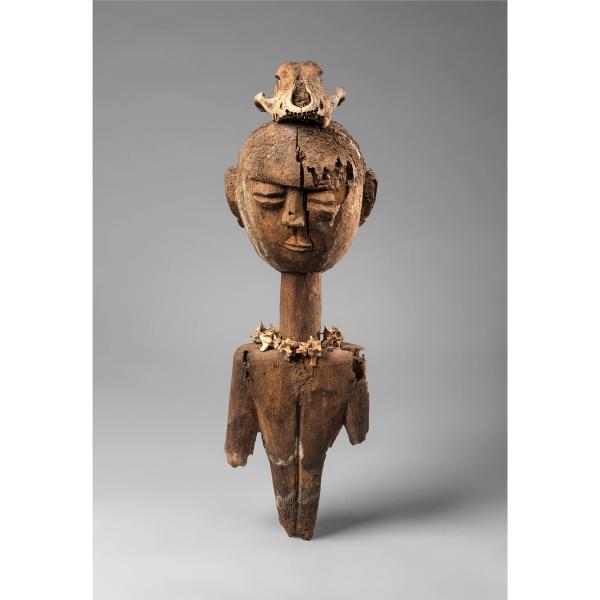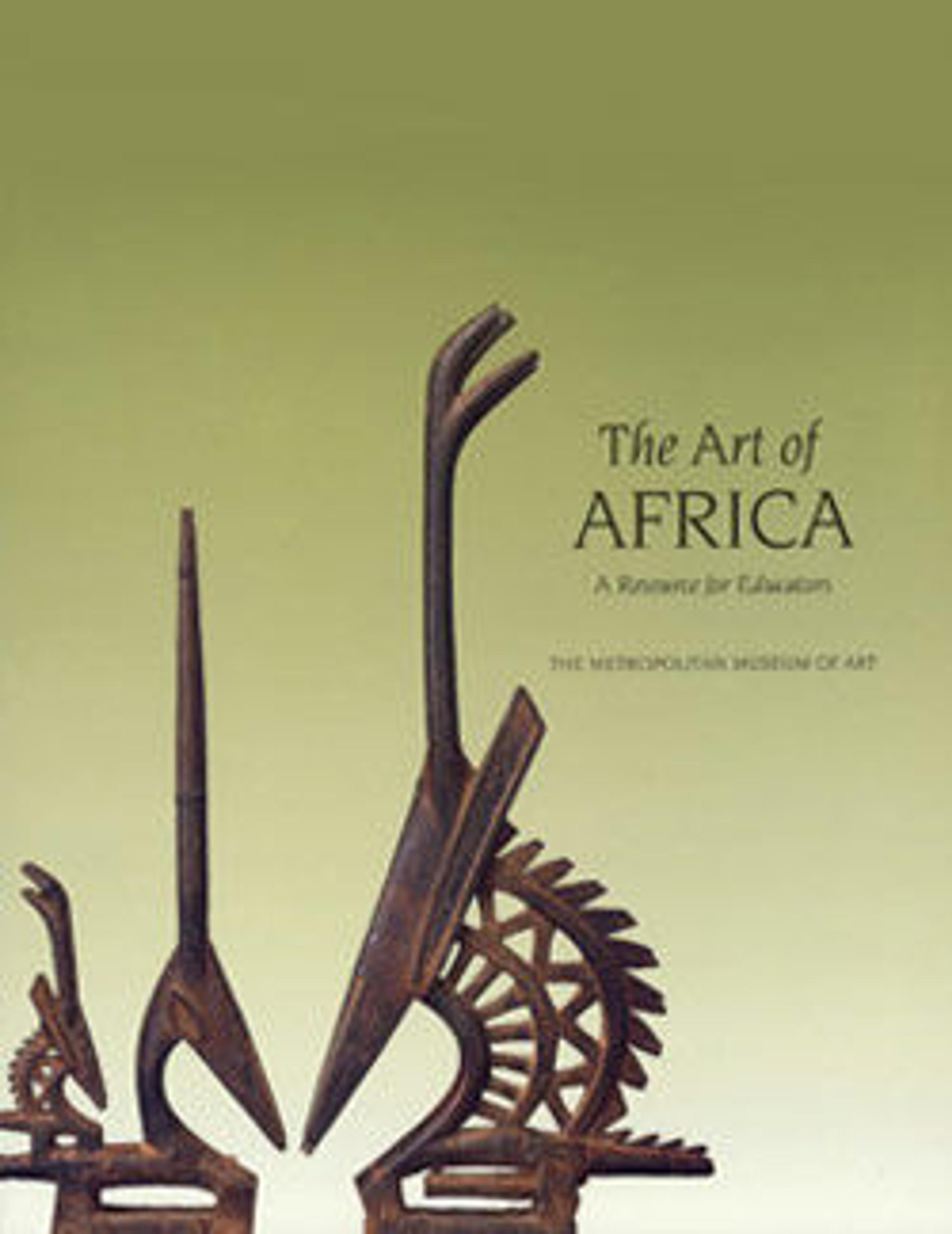Bocio with opposing faces
Artwork Details
- Title:Bocio with opposing faces
- Artist:Fon artist and ritual specialist
- Date:Late 19th–mid-20th century
- Geography:Republic of Benin
- Culture:Fon peoples
- Medium:Wood, bone, teeth, wire, applied organic material, textile fragment
- Dimensions:H. 19 1/2 x W. 5 3/4 x D. 5 5/8 in. (49.5 x 14.6 x 14.3 cm)
- Classification:Wood-Sculpture
- Credit Line:Purchase, Denise and Andrew Saul Philanthropic Fund Gift, 1984
- Object Number:1984.190
- Curatorial Department: The Michael C. Rockefeller Wing
Audio

1536. Bocio with opposing faces, Fon artist and ritual specialist
Suzanne Preston Blier
SUZANNE PRESTON BLIER: Bocio are quite well-known objects in the Dahomey culture. The term ‘bo’ means empowered, ‘cio’ means cadaver. So, if you’re looking at these sculptural works, it means empowered corpse.
They have the role more characteristically of a means of protection, a kind of scarecrow, in which any of the negative elements that might be coming one's way would latch onto this surrogate figure and protect the humans that had placed it in power.
ANGELIQUE KIDJO (NARRATOR): Suzanne Preston Blier, professor of African Art History at Harvard University.
SUZANNE PRESTON BLIER: One of the distinctive things about this particular bocio is it has two faces. Not only can this figure see in two directions a harm that might come one’s way, but the figure has four eyes—the ability to see both in this world and in another world. The ears are beautifully carved, but also relatively large. So in addition to seeing, they also can hear.
ANGELIQUE KIDJO: Bocio straddle the human and spirit realms. The way they are made and where they are placed help them to connect with both.
SUZANNE PRESTON BLIER: They’re often inserted into the ground and speak to the ancestors who are living in the ground, who have a direct role in contacting various deities within this larger pantheon. So, they’re speaking, on the one hand, to humans, those who are creating them; they’re speaking to the ancestors, the important figures in one’s own family who are now deceased; and also the broader spiritual world in which all of these figures play a part.
ANGELIQUE KIDJO: The expressions on the bocio's faces show complete calm and serenity.
SUZANNE PRESON BLIER: Whatever harm might be coming one’s way, you get a sense that nothing can impact them. It provides a model for how we as humans should be responding to trials, that we should imagine that the best way forward is to evoke the idea that we are calm, that nothing really is going to impact us negatively.
More Artwork
Research Resources
The Met provides unparalleled resources for research and welcomes an international community of students and scholars. The Met's Open Access API is where creators and researchers can connect to the The Met collection. Open Access data and public domain images are available for unrestricted commercial and noncommercial use without permission or fee.
To request images under copyright and other restrictions, please use this Image Request form.
Feedback
We continue to research and examine historical and cultural context for objects in The Met collection. If you have comments or questions about this object record, please contact us using the form below. The Museum looks forward to receiving your comments.
